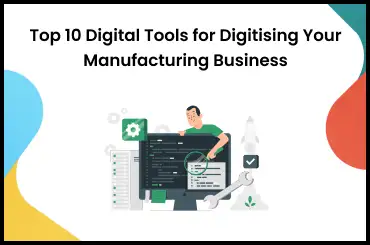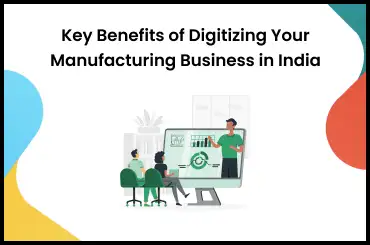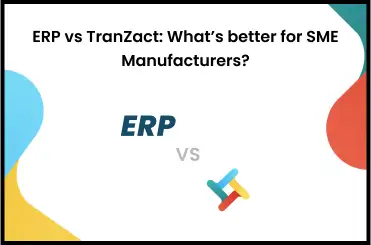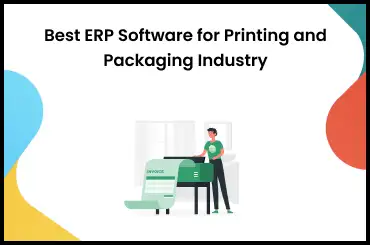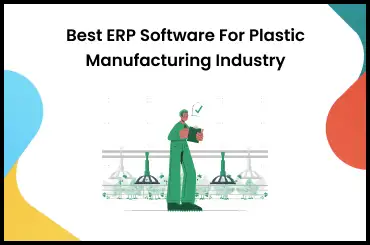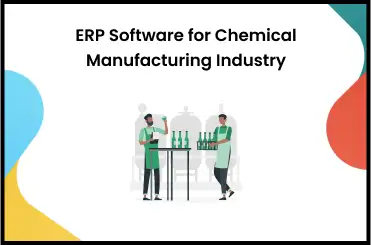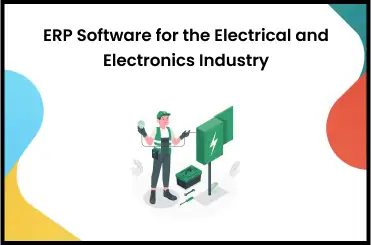'How to generate e-invoice' - this is a common question amongst all B2B entities registered under the GST regime. The Indian government has recently introduced e-invoicing to streamline B2B invoicing and make it easily trackable.
Starting 1st April 2021, the Indian government decided to implement a GST e-invoicing system for taxpayers with an aggregate turnover of over INR 50 crore. Since then, GST e-invoicing has seen numerous updates, with the turnover limit gradually reduced to INR 20 crore and subsequently to INR 10 crore starting 1st October 2022.
Starting 1st January 2023, the limit for e-invoice generation stands at INR 5 crore. While the primary reason for its introduction was to curb tax evasion, e-invoicing has brought about a holistic improvement in the overall GST system and has induced additional interoperability.
This article discusses how to generate e-invoices, the benefits, and some common error codes that GST assessees may come across while executing it.
How to Generate E-Invoice?
GST e-invoice refers to generating digital invoices for goods and services a business provides. It is done via the Invoice Registration Portal (IRP). The government has issued a prescribed format for electronic invoicing, and businesses have to generate it on their own, preferably via their accounting software with an inbuilt capability to generate e-invoices.
You can integrate the IRP using Application Programming Interface (APIs) into your existing accounting software to make the system seamless and glitch-free. Here are the steps to generate a GST e-invoice for your business -
Creating an invoice
The seller or supplier will use the prescribed format to generate the invoice with all the mandatory details via their billing or accounting software. You can also use the offline utility offered by the government to generate the same. The software will provide you with a JavaScript Object Notation (JSON) file for each B2B invoice generated.
Uploading the invoice
Now, the invoice JSON will be uploaded to the IRP system. In most cases, the GST Suvidha Provider (GSP) module will be used to integrate the IRP with the accounting software your organization uses. It enables the automation of the invoice uploading process, so your accounting software will send the requisite details to the IRP portal directly.
Generating the Invoice Reference Number (IRN)
Once you have uploaded the invoice JSON, the system will validate it and check it against the GST central registry to prevent duplicity and fraud.
After the validation is complete, the IRP system will use a hash-generation method to generate a unique IRN number for your invoice. This reference number will be unique for the specific invoice for the entire financial year.
Signing the e-invoice
Now, the IRP will update the e-invoice with a digital signature and a unique QR code to the JSON. If your accounting software is integrated into the IRP via GSP, the process will be automated, and the software will automatically fetch and print these details. You can leverage the best GST billing software for this purpose. The IRN number will become the invoice's identity and is sent to the supplier via their registered email ID.
Transferring the data to the e-way billing and GST system
The final e-invoice JSON will be communicated with the e-way billing and the GST system for further processing. Here, an e-waybill will be prepared, and the invoice data will be used for auto-populating GST returns.
Common Error Codes While Generating E-Invoice
Here are some of the most common errors you are likely to come across while generating GST e-invoice -
| Error Code | Error Message | Error Reason | Solution |
|---|---|---|---|
| 2150 | Duplicate IRN | Trying to register an already-registered document for which IRN has been generated previously. | It can occur when trying to file the same request multiple times simultaneously. The best solution is to wait and not keep entering the same IRN request. If the IRN is still unavailable the next time you check, you can proceed with a new request. |
| 2172 | For intrastate transactions, IGST amounts are not applicable for item - {0} and Sl. No {1}, only CGST and SGST amounts are applicable. | The assessee has entered the amount in the IGST column for intra-state transactions instead of CGST and SGST. | Go through the transaction details to understand the tax applicability and to ascertain if it is an intrastate or interstate transaction. |
| 2176 | Invalid HSN code(s)-{0} | The assessee has entered an incorrect HSN code in the invoice. | Double-check the HSN code entered. You can also send the HSN details to the helpdesk for verification and help. |
| 2182 | The taxable value of all goods must be equal to the total taxable value | There is a difference in the cumulative taxable amount and the total taxable value of all the individual line items in the invoice. | Check to ensure that the total taxable value equals the taxable value of all the line items. |
| 2189 | Invalid total invoice value | The sum value of the invoice differs from the total of the individual line items. | There is a tolerance limit of +/- 1 between the total of the line items and the invoice value. Refer to the validations in the sandbox portal to resolve the issue. |
| 2193 | AssAmt value equals the (TotAmt - Discount) for HSN - {0} and Sl. No {1} | The assessee has entered an incorrect assessable amount for a particular item. | Make the adjustment for discount to reach the final assessable value. |
| 2194 | Invalid total item value for HSN - {0} and Sl. No {1} | Incorrect total item value entered. | Go through the validations in the portal to ensure that the total item value matches the assessable value with a tolerance limit of +/- 1. |
| 2211 | Supplier and recipient GSTIN should be different | The assessee has entered the same GSTIN for the supplier and the buyer. | You cannot issue a self-generated invoice for e-invoice processing. |
| 2212 | The GSTIN of the recipient cannot be URP for supply type {0} | The assessee has addressed an invoice to an unregistered person as a B2B transaction. | Enter the actual GSTIN for the transaction to process. |
| 2227 | The SGST and CGST amounts should be equal for HSN - {0} and Sl. No {1} | The difference in CGST and SGST amounts. | Go through the validations to ensure that the CGST and SGST amounts are the same. |
| 2233 | Duplicate SI numbers are not allowed in items | Duplicate serial numbers were issued to unique items in the invoice. | Change the serial numbers to ensure each item has a unique one. |
| 2234 | The SGST and CGST amounts for HSN - {0} and Sl. No {1} are invalid | The CGST and SGST amount entered for a particular line item are incorrect. | Rectify the amounts to ensure that the CGST and SGST values are the same. |
| 2235 | The IGST amount given with HSN -{0} and Sl. No {1} is invalid | The IGST amount entered for a particular line item needs to be corrected. | Make the necessary changes to ensure that the correct IGST amount is reflected. |
| 2240 | The GST rate for HSN -{0} and Sl. No {1} is invalid | The assessee has entered an incorrect GST rate. | Go through the GST tax slabs and ensure that you have all the items under their respective tax slabs. |
| 2244 | Recipient pincode is mandatory for the transaction -{0} | The recipient's pincode is not entered for a specific transaction type. | You must enter the right pincode under recipient's details for the transaction to go through. |
| 2265 | The recipient GSTIN state code should be the same as the state code passed in the recipient's details | The initial two digits and the state code of the GSTIN are different from the recipient's details. | Amend the GSTIN to ensure it reflects the right state code. |
| 2275 | The recipient PIN code should be 999999 for direct export | The pincode should be entered as 999999 for specified transaction types. | The assessee must enter 999999 as the pincode under recipient details for such transactions. |
| 3028 | No GSTIN is present in the invoice system | The recipient GSTIN entered is invalid or doesn't exist in the e-invoice system. | Ensure that the GSTIN entered is correct. If you have entered the correct GSTIN, select the "Sync GSTIN from GST CP" option. |
| 3029 | GSTIN is not active | The entered GSTIN stands canceled or inactive. | Double-check the GSTIN to ensure the correct details are entered. If the data entered is correct, use the "Sync GSTIN from GST CP" option. |
Benefits of GST E-Invoicing System
The e-invoicing system entails several benefits, such as -
- It makes data reconciliation easier and helps minimize clerical errors.
- It allows real-time invoice tracking.
- It helps in seamless business interoperability.
- It enables the auto-population of data on GST returns and e-way bills.
- It helps curb fake invoices by assigning a unique IRN number to each transaction.
Latest Updates in GST E-Invoice
The following are a few updates in recent times to the GST e-invoicing system: a. On 27th December 2022, the Indian government recommended lowering the limit for generating GST e-invoices to INR 5 crore. The lower limits are to be applied from 1st January 2023. b. Starting 1st October 2022, if the taxpayer's aggregate turnover exceeds INR 10 crore, they must compulsorily generate e-invoices. c . On 21st July 2022, the government started sandbox testing GST e-invoices for businesses with aggregate turnover between INR 10 crore and 20 crore. d. On 2nd May 2022, the DGTS CBIC organized a special webinar on e-invoicing. e. On 25th February 2022, the GST turnover limit was reduced to INR 20 crore from INR 50 crore for compulsory e-invoice generation. f. Starting 1st April 2021, GST taxpayers with over INR 50 crore turnover have to move to the e-invoicing system compulsorily.
Is Your Business E-Invoice Compliant?
The move to introduce and lower GST e-invoicing limits will help the tax authorities keep a better trail of B2B transactions uploaded on the GST portal. Such a move will also reduce the chances of manipulating invoices once their digital copy is generated.
With its ability to auto-populate data for e-way bills and GST forms, the e-invoicing system has also made the GST filing process less cumbersome and less error-prone for assessees. It allows them to carry on with their businesses without worrying about unwanted tax regulations.
TranZact helps you to create e-invoices that are GST compliant using its automated solutions. It helps you to record accurate invoice details with a few clicks and helps you to save time. With TranZact you can create 15+ documents and over 65+ reports on a single platform and save significant costs.
FAQs on How to Generate E-Invoice
1. What is GST e-invoice?
GST e-invoice is a type of invoicing or platform in India wherein B2B invoices are validated electronically by the Goods and Services Tax Network. The GST e-invoicing system has introduced digital invoices for eligible goods and services a business offers to another. It is a move aimed at curbing fake GST e-invoicing and fraud.
2. Who are all eligible for e-invoice?
While the government plans to cover the entire ambit of GST taxpayers under e-invoicing, currently, it is only limited to B2B businesses exceeding pre-identified turnover thresholds.
3. Is it compulsory to generate an e-invoice?
E-invoice is mandatory for those who meet the notified criteria of aggregate turnover.
4. What is the minimum amount for e-invoice?
The current limit set by the tax authorities for compulsory e-invoicing is INR 5 crore.









